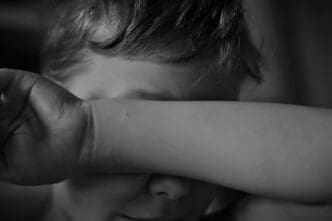The sight of a car adorned with a “Trump 2020” sticker and another proclaiming “We’re Saying Christmas Again!” in a Connecticut parking lot evokes a complex mix of emotions and reflections. This vehicle, possibly belonging to a member of the local dance studio community, symbolizes a world of contrasting ideologies and personal fears.
In this affluent shoreline town, diverse identities often navigate beneath the surface of societal norms. For one individual, who identifies as a single, disabled, queer, and nonbinary parent, the presence of such political symbols stirs apprehension. Living in a context where visible disability and certain privileges intersect with marginalized identities creates a unique set of challenges and encounters.
The vehicle’s owner could represent a range of perspectives. It may be someone advocating for change in government policy, valuing personal freedom, or holding strong religious convictions. However, it also serves as a reminder of the potential presence of those who may oppose diverse identities, wishing to see them marginalized or ostracized.
At a local salon, a request for a “nonbinary haircut” transforms into a moment of euphoria when the stylist inquires about preferred pronouns, fostering an empowering sense of recognition and acceptance. This encounter highlights the broader struggle for visibility and respect within the community, accentuated by a young daughter’s innocent joy and creativity, as she shares her imaginative stories.
The experience reinforces a commitment to embody courage and authenticity for the next generation, emphasizing the importance of being seen and heard, even amid societal challenges and prejudices.
The Human Element Explored
This narrative sheds light on the everyday realities faced by those navigating the intersection of diverse identities within their communities. The presence of political expressions, such as bumper stickers, can serve as both a reminder of societal divides and a catalyst for personal reflection. For individuals who identify with multiple marginalized groups, this can exacerbate feelings of vulnerability and isolation.
Yet, the human interactions, like those experienced in the salon, underscore the power of recognition and empathy, offering a glimpse of hope and connection. Such moments are crucial as they validate personal identities and reinforce the resolve to foster a more inclusive and understanding world for future generations. The experiences shared in this context encourage reflection on the impact of societal symbols and personal actions, urging a collective movement toward acceptance and inclusivity.






